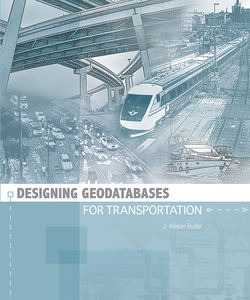Читать книгу Designing Geodatabases for Transportation - J. Allison Butler - Страница 49
Realignment
ОглавлениеThe way you segment centerlines will affect future editing workloads. One of the more common issues you will deal with is facility realignments. A typical approach to building a geodatabase for road features is to identify the entities to be included by name and route number. You may additionally subdivide these entities at county lines or district boundaries to reduce the extent of changes or to coincide with your data maintenance organizational structure. This is all fine and good, but once the features are created, you need to break the symmetry of entities and features and treat name or route number as just another attribute. If you try to preserve the symmetry, you will have a lot of extra work when a road is realigned, particularly if you are using a linear location referencing method. The problem is that realignment causes the total length of the facility to change, resulting in a ripple effect through all the downstream locations. You either have to revise all their measure values or create some sort of reconciliation structure in the measure values to deal with the missing or duplicative values within the area of realignment. You also may lose the ability to properly map event data applicable in datasets tied to old measure values.
A better choice is to treat the new section as a new facility. Add a facility status field to the database and give it one of three values: active, retired, and replaced. (See chapter 6.) You would leave the old alignment in the dataset; just list its status as retired. If you need to display historical data on the former alignment, the feature and its linear measures are still in place to do the job. You also do not need to change any downstream data. All the data about the new section is also new, so there is no lineage issue for the facility identifier and linear measures used by it. If you want to see the present state of the system, just select all the active facilities. You can select by date and status to produce various time-stamped views of the geodatabase.
Figure 4.8 A strategy for realignments One of the traditionally difficult aspects of a transportation dataset based on a route-milelog linear referencing method (LRM) is facility realignments that change the length of the facility at a midpoint. Such a change, if accomplished through traditional methods, will reshape the affected geometry and recalculate the measure for downstream events. A better way that avoids modifying all the event records is to make a new feature for the realigned portion and abandon the replaced segment. A status attribute identifies active and retired route segments. This approach has the benefit of retaining the original geometry and measures for time-based analyses.
